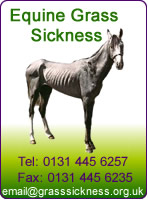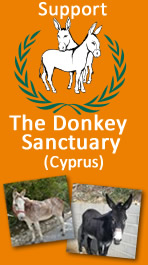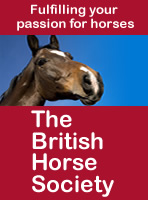
And photographs, if you have any.
Horseytalk.net Special Interview
Thea Maxfield
Rider who suffered horrific broken neck rides again.
Thanks
to F1 racing car technology
A woman who suffered a broken neck known as a ‘hangman’s
fracture’ after an horrific fall from her horse
is back in the saddle thanks to revolutionary technology
–pioneered
in Formula One RACING CARS.
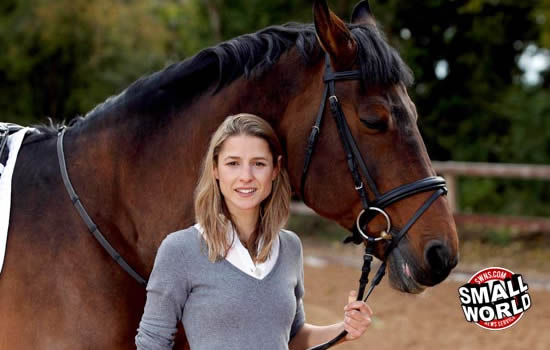
Thea Maxfield, 26, suffered near fatal injuries when her dressage horse Thiorella bucked her 20ft into the air and she landed badly last October.
The ‘hangman’s fracture’ meant Thea had to hold her own head in her hands to avoid damaging her spinal cord after her vertebrae shattered leaving no supporting connective tissue.
Doctors initially warned Thea that she could be permanently paralysed and spend the rest of her life in a wheelchair.
But they fixed a permanent brace to her neck for three months to fuse the vertebrae and Thea was riding again seven months later after physiotherapists used technology from the world of F1.
She also drank a herbal remedy of Comfrey – known as ‘Symphytum officinale’ – normally given to horses to increase the elasticity of the bones and prevent them becoming brittle after a fracture.
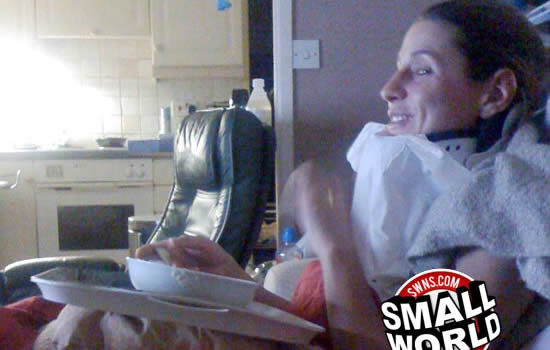
Thea is the first person in the world to undergo treatment for a broken neck using a specially-adapted head brace connected to a computer by tiny sensors.
The sensors, which measure the force and stresses an F1 car goes through as it speeds round the track, were used to assess the strength and weakness of Thea’s neck.
This information was fed into a super-computer and her physiotherapists used it to tailor an exercise routine to ensure her neck healed at the perfect rate.
She now hopes to compete in major competitions after the groundbreaking physiotherapy.
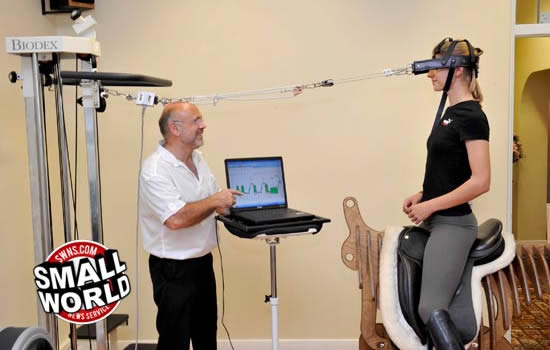
Thea, who runs a stud farm in Bicester, Oxon., said: ”As soon as I came off the horse I knew something was wrong.
”I went to get up but my head stayed on the floor. I couldn’t move my neck or my head and I had to literally pick my head up and carry it in my hands.
”My horse was galloping around and I just had to get out of the way. When we arrived at the hospital I was told that this type of fracture can kill people.
”I didn’t have that much hope of a recovery but I’ve been incredibly lucky to have been able to use this new technology which has helped me tremendously.”
Thea had been trotting her 16.2hh mare Thiorella in the ménage at her stud farm in front of mum Diane, 66.
But the mare suddenly bucked in the air flinging Thea into the air before she smashed onto the ground head-first.
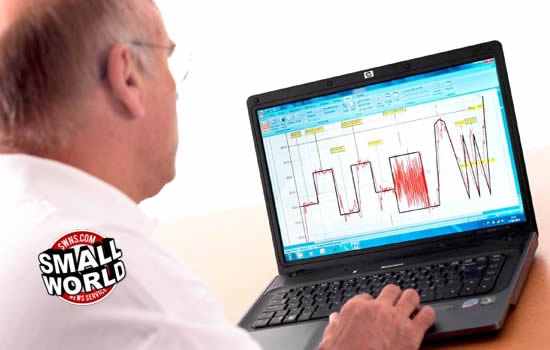
She suffered a fractured skull and remained in hospital for several days before being released with a neck brace to wear for three months.
Physiotherapist Don Gatherer, who developed a £6,000 TGP Analysis device to treat top sportsmen, stepped in to help.
Don used the load cells and strain gauges that measure the force of steering wheels, suspension and airflow on F1 cars to accurately record the strength of Thea’s muscles.
The pair bought a mechanical horse and developed a special harness to measure the exact strength of Thea’s neck muscles.
Don was then able to tailor the exercises exactly needed to repair Thea’s neck without causing further injuries.
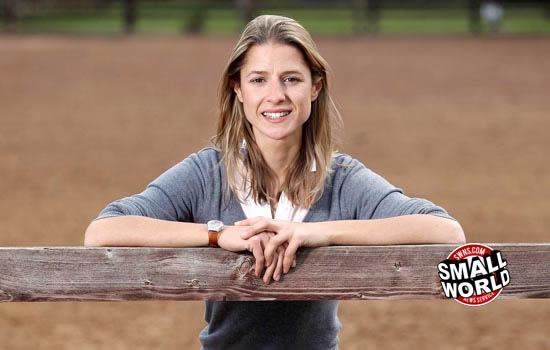
Doctor’s said that Thea might need a few years before she recovered but she was riding horses again after just seven months.
She now plans to compete in the Prix St George’s level 2 dressage competition next year.
Thea said: ”I couldn’t believe it when my horse went berserk. She bucked twice vertically in the air and I was thrown into the air.
”It’s ironic that I had been rehabilitating the horse at the time and she was the one that injured me.
”My recovery has been speeded up beyond belief. I feel incredibly lucky to have been able to use the technology.”
Physiotherapists usually give patients exercises based on how comfortable they feel in certain positions.
But the TGP Analysis device feeds data to a super computer to calculate how much force the muscles are able to withstand.
Don, from Ayelsbury, Bucks., believes the TGP Analysis device could also be used to test if benefits claimants are ”faking” injury.
He said: ”We can precisely measure the muscle strength, enabling us to create a safe training programme whilst ensuring forces exerting on the muscle during training are within guidelines.
”Previously, Thea lacked strength but combined with using our patented harness that prevents excess loads from being applied, she has improved core strength to improve posture and stability.
”We used a saddle horse for the training at the clinic and in the stable.
”This provided the best way of ensuring the right muscles are being worked upon as opposed to training whilst standing or sitting down.
”The accuracy of this system couple with the analysis software enables physios to use it as a method of understanding what muscle force is actually possible.
”This enables the physio to ensure the right treatment is administered or, in the case of benefit claimants, data will be available to assess suitability.
”The data from the machines could also be used to test if benefits claimants have genuine problems.”



